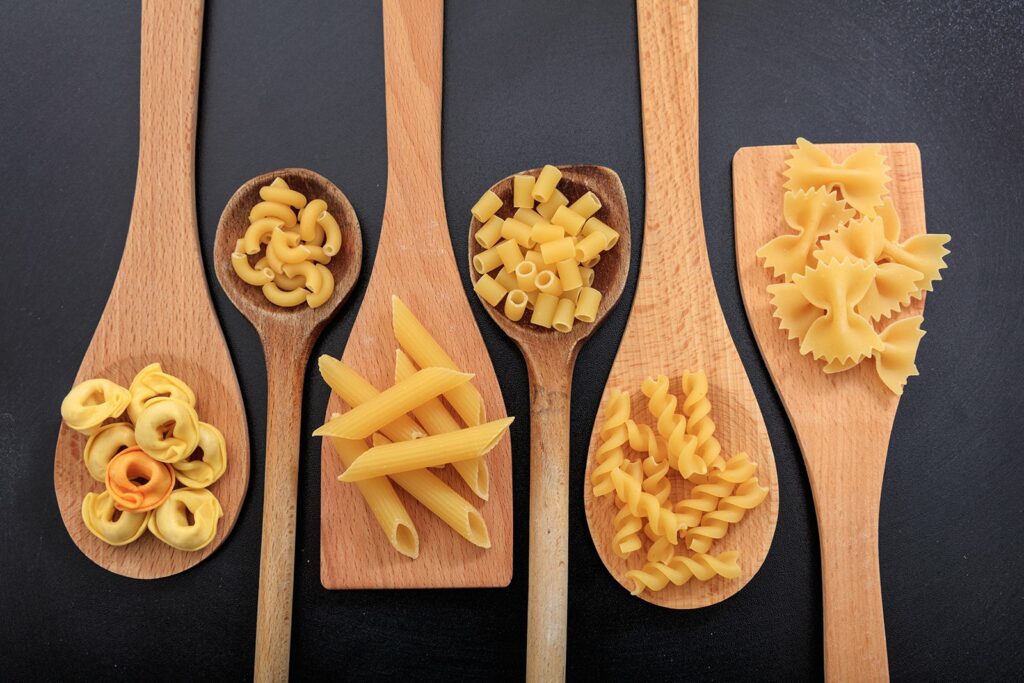Historians believe Marco Polo introduced pasta to Italy after exploring the east back in the 13th Century. However, there is evidence that shows that pasta can be traced back as far as the 4th Century BC. But did you know there were only four main types of pasta back then?
In Italy presently, there are over 350 recognized pasta variations. In the 13th century, there were four primary forms of pasta, namely; spaghetti, ravioli, macaroni, and gnocchi.
The History of Pasta Shapes and Sizes
In Italy, the number is over 350, with its curves, ridges, diameters, and lengths, characteristics that lend themselves to specific sauce applications, all enjoyed by pasta lovers from various flavor and textural spectrums.
More so than sauce, pasta is strongly associated with Italy. The final product is pure culinary alchemy, made from basic, unassuming materials like flour, eggs, salt, and water. These four elements combine to form golden bands and bits that support the weight of sauces, meats, and cheeses, often all at once, and serve as the basis for a bewildering variety of dishes.
Diverse people recall the basic school lesson about Marco Polo and his journeys to the Far East while discussing the origins of pasta in this culinary epicenter and its many areas. According to the legend, the renowned explorer brought noodles back to Venice after a perilous journey through China, and the novel dish quickly gained popularity across Italy.
Although this may be the case, other hypotheses contend that pasta existed in and around the nation long before Polo’s journey east. (Source: Paesana)
Different Pasta Shapes
The pasta wasn’t sliced into haphazard shapes to demonstrate the cook’s skill with a few implements. Every pasta shape has a specific use; some were designed for soups, some for meat sauces, and others were created to cradle more delicate sauces in their inviting grooves and folds.
Then there are the shapes that appear to have been designed exclusively for a single dish. The most famous of these is lasagna, the original large-sized pasta dish. This long, flat sheet is piled with meats, cheeses, sauce, and cream to create a sumptuous dish with Middle Ages roots in Naples. (Source: Paesana)
Pasta Zero
Was there a pasta primeval from which all other pasta sprang, and what was the initial pasta shape? That depends on who you ask, I suppose. In the 13th century, four kinds of pasta, macaroni, ravioli, gnocchi, and vermicelli, started to appear throughout the Italian peninsula. Although we now think of pasta as a staple of the peasantry, it was initially served to the wealthy in elaborate dishes that ranged from sweet to savory. For instance, ravioli were frequently filled with pork belly, cow udders, roast pork, hard and fresh cheeses, sugar, herbs, spices, and raisins.
Eventually, pasta simplified and trickled down to the commoners, who found it a filling replacement for hard-to-find meats. But mainly, the 17th-century invention of the Torchio, a pasta pressing machine, helped spread pasta throughout the Italian countryside. (Source: Paesana)
Pasta in the Modern World
While it’s true that the majority of pasta shapes have been around for untold generations, creative cooks all over the world are continually cutting and stretching pasta to create new forms. The semi-obscure caramelle, a stuffed pasta frequently filled with cheese, vegetables, or meat and twisted closed on both ends, is one of the more intriguing modern varieties and gets its name from candy wrappers.
And that is but one instance. A stroll down any supermarket’s pasta aisle would reveal a few lesser-known casting among the familiar geometry of popular choices like stringy spaghetti, cylinder-shaped penne, and tube-shaped rigatoni.
The list of potential pasta is constantly changing. Traditional molds are continuously being recast, and fresh, creative inventions are continually emerging as the culinary world pays attention to consumers who suffer from gluten sensitivity. (Source: Paesana)
